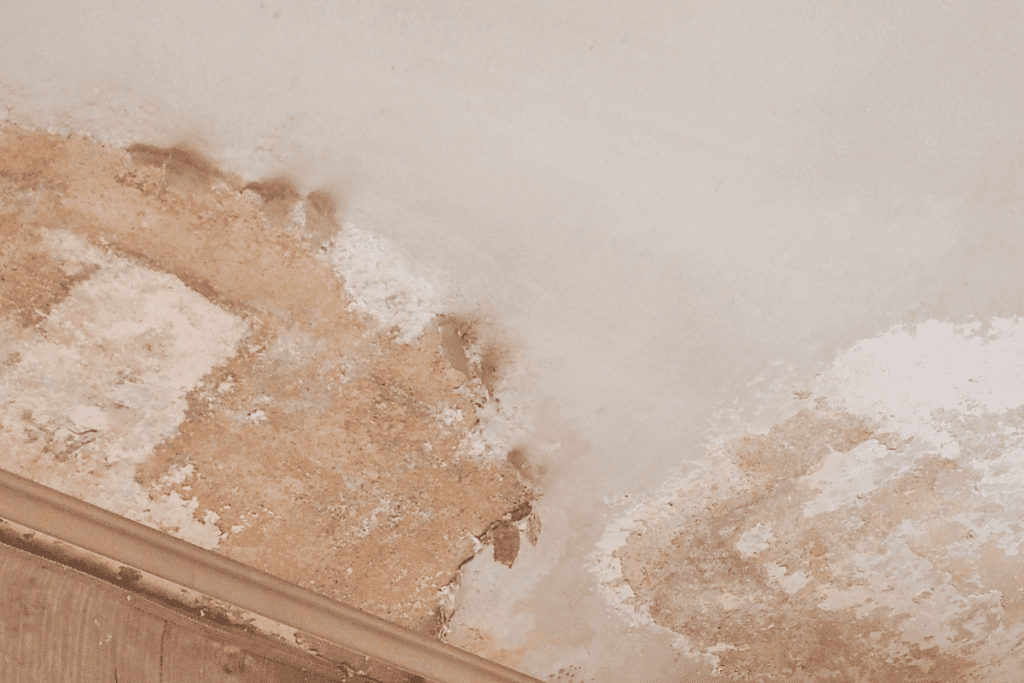Damp Survey: What Does a Damp Survey Involve?
Understanding the complexities of damp issues in properties is critical for homeowners and potential buyers alike. A damp survey is a crucial tool in diagnosing and addressing these problems effectively.
This article will delve into the various facets of damp surveys, shedding light on what they involve, their importance, and how they can help resolve damp-related concerns.
What Is a Damp Survey and Why Do You Need One?

Understanding the Purpose of A Damp Survey
A damp survey serves as a specific type of survey that focuses on identifying and diagnosing damp problems within a property. It is conducted by a qualified damp surveyor who has the expertise to spot signs of damp and determine the underlying causes.
The primary purpose of a damp survey is to assess the extent of damp issues and to provide recommendations for effective damp treatment. Understanding the purpose of a damp survey is crucial, especially since damp is a common issue that can lead to significant property damage if left untreated.
When Should You Request a Damp Survey?
It is advisable to request a damp survey under various circumstances. If you notice any signs of damp in your property, such as peeling paint, musty smells, or visible mould growth, it is time to consult a professional damp surveyor.
Additionally, if you are purchasing a new property, a damp survey can help you uncover any hidden damp issues that might not be apparent during a property survey. Even if there are no visible signs, if the property is located in an area prone to dampness, a proactive approach would be to have a damp survey conducted to ensure that damp is not present.
Common Signs of Damp in Properties
Recognizing the common signs of damp is vital for property owners. Some of the most prevalent indicators include discolored walls, damp patches, and the presence of mould, particularly in corners or around windows. Additionally, elevated damp readings can be detected using a damp meter, indicating moisture levels above normal.
These signs are often the first alert for homeowners to need a damp survey, as they suggest that a damp problem may be developing that could worsen over time.
What Does a Damp Survey Involve?

Key Steps that Go Into a Damp Survey
A damp survey involves several key steps that are essential for a thorough assessment. Initially, the qualified damp surveyor will conduct a visual inspection of the property, systematically looking for signs of damp. They will also evaluate potential sources of moisture ingress, such as leaks or poor ventilation.
Following the visual inspection, the surveyor may take readings with a damp meter to quantify the moisture levels in various materials throughout the property. A comprehensive analysis of the findings will then be compiled into a written damp report, which details the type of damp problem identified and recommendations for remediation.
What Tools Does a Damp Surveyor Use?
A qualified damp surveyor utilizes a variety of specialized tools to conduct a damp survey effectively. One of the most common tools is the damp meter, which measures moisture levels in walls and other surfaces. This tool helps in identifying areas with elevated damp readings, indicating potential damp issues.
In addition, surveyors may use infrared cameras to detect hidden moisture behind surfaces, providing a deeper insight into the damp conditions within the property. Each tool plays a critical role in ensuring that the surveyor can accurately diagnose the cause of the damp issues.
How Does a Damp Report Help in Identifying Issues?
The damp report generated after a survey is a crucial document that outlines the findings of the damp survey. It provides a detailed description of the type of damp present, whether it is rising damp, penetrating damp, or condensation-related issues.
Furthermore, the report includes recommendations for damp proofing work or other remedial damp treatment options that can be undertaken to mitigate the identified damp problem. This report serves as a valuable resource for homeowners and professionals alike, guiding them in making informed decisions regarding necessary repairs and maintenance.
How Much Does a Damp Survey Cost?
Factors Affecting the Cost of A Damp Survey
The cost of a damp survey can vary widely based on several factors. The size of the property, the complexity of the damp issues, and the location are all significant determinants of the damp survey cost. Larger properties may require more extensive inspections, leading to higher fees.
Additionally, if the property has a history of damp problems or requires a more detailed investigation, this can also contribute to increased costs. It is essential for homeowners to consider these factors when budgeting for a damp survey.
Is a Damp Survey Worth the Investment?
Investing in a damp survey is often worth it, particularly for homeowners facing potential damp issues. The insights gained from a damp survey can save property owners from costly repairs in the future by addressing damp problems early.
Moreover, for prospective buyers, a damp survey can uncover hidden issues that may affect the property’s value and livability. The cost of a damp survey is typically much lower than the potential expenses associated with extensive damp treatment or property damage, making it a wise investment.
Comparing Costs: Damp Survey vs. Damp Treatment
When considering the financial aspect of damp management, comparing the costs of a damp survey and subsequent damp treatment is essential. While a damp survey incurs an upfront cost, it provides valuable information that can lead to effective damp treatment solutions.
On the other hand, failing to conduct a damp survey may result in more severe damp issues that require extensive and expensive remediation work. Therefore, understanding the cost-benefit analysis of a damp survey versus damp treatment is crucial for maintaining a property’s integrity.
What Types of Damp Can a Damp Survey Identify?

Differentiating Between Rising Damp and Penetrating Damp
One of the primary functions of a damp survey is to differentiate between the various types of damp that may be present in a property. Rising damp occurs when moisture from the ground rises through walls due to capillary action, while penetrating damp results from external sources, such as rainwater that seeps through walls.
A qualified damp surveyor will be able to identify the specific type of damp problem present and recommend appropriate solutions, such as the installation of a damp proof course for rising damp or repairs to external elements for penetrating damp.
How Mould Relates to Different Types of Damp
Mould is a common consequence of damp issues and can arise from both rising damp and penetrating damp conditions. When damp is present, it creates an environment conducive to mould growth, which can pose significant health risks.
A damp survey will assess the extent of mould growth and its relation to the underlying damp problem. The surveyor will provide recommendations for both addressing the damp issue and remediating the mould, ensuring that the property is safe and healthy for occupants.
Identifying the Cause of The Damp Issues
One of the most critical aspects of a damp survey is identifying the cause of the damp issues. Whether it is due to structural defects, inadequate ventilation, or external water ingress, pinpointing the root cause is essential for effective damp treatment.
The damp surveyor will consider various factors, including the property’s location, age, and construction materials, to determine the most likely sources of the damp problem. This thorough analysis allows for targeted interventions that address the specific causes, preventing future damp issues from arising.
What to Expect from A Damp Report?
What Information Is Included in A Damp Report?
A damp report typically includes comprehensive information about the findings of the damp survey. It outlines the specific type of damp identified, details any signs of damp observed, and provides moisture readings obtained from the damp meter.
Additionally, the report will include photographs and diagrams to support the findings, making it easier for property owners to understand the issues at hand. Recommendations for damp proofing work and necessary repairs will also be detailed, providing a clear action plan for addressing the damp problems.
How to Interpret the Findings of A Damp Report
Interpreting the findings of a damp report can be straightforward with the right guidance. Homeowners should pay close attention to the types of damp identified, as well as the severity of the issues reported. Understanding the recommended actions is equally important, as it will inform what steps need to be taken next.
If there is any uncertainty about the findings or recommendations, consulting with the qualified damp surveyor for clarification can help ensure a proper understanding of the necessary actions to resolve the damp problems.
Next Steps After Receiving Your Damp Report
After receiving your damp report, the next steps involve implementing the recommendations provided by the damp surveyor. This may include scheduling remedial damp treatment, such as installing a damp proof course or repairing structural defects that contribute to damp issues.
It is also advisable to monitor the property regularly for any signs of damp, following up with professional assistance if new issues arise. By taking prompt action based on the damp report, property owners can effectively mitigate damp problems and protect their investment.







